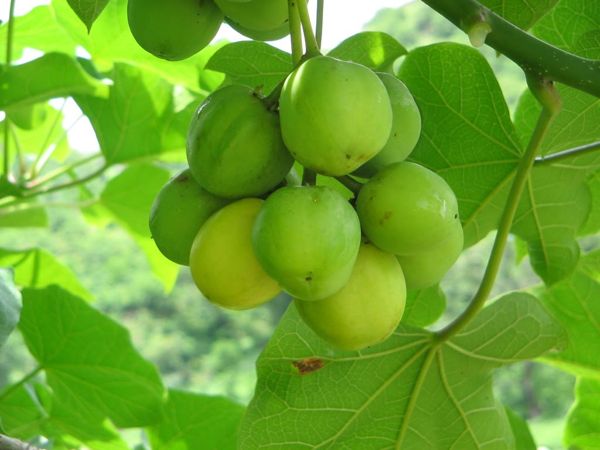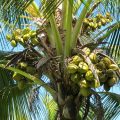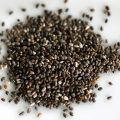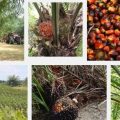The oil of the physic nut, Jatropha curcas, is now being formulated in the Philippines as pesticide and molluscide. But more than this, the 37 percent oil content of this nut can be a diesel fuel substitute. Even without being refined, the oil can burn with clear smoke-free flame. This has been tested successfully as fuel for simple diesel engines. The by-product, a press cake, is a good organic fertilizer.

The Plant
The physic nut is a small tree, about 3-5 m tall but can reach 8 m under favorable conditions. The large leaves that are alternate to sub-opposite, three to five-lobed with a spiral phyllotaxis, are green to pale-green. From its smooth, gray bark flows out whitish, watery latex when cut. The inflorescence formed at the leaf axil yields a bunch of approximately 10 or more ovoid fruits. These fruits are produced when the tree is leafless. Three bivalve cocci are formed when the seeds mature and the fleshy exocarp dries. The seeds are mature when the capsule changes from green to yellow.
Widely cultivated in the tropics, this plant is easy to establish with minimum inputs. It is drought-resistant, adapted to sandy, saline, stony, and marginal soils although it grows well on well-drained soils with good aeration. It is propagated through seeds or stem cuttings.
One hectare of Jatropha curcas, on the average, can produce 3.75 mt of seeds, yielding 1.2 mt of oil.
Potential
The potential of this plant lies in its multiple uses, the most important of which is as erosion control and for oil production. These uses of the plant are not new and there are existing technologies that can be used. Ten percent of Nicaragua’s diesel consumption, for instance, comes from Jatropha. The Philippines can also tap the potential of this plant. Since it can grow well in marginal areas, the lahar-laden areas can again be made productive through this plant.
All parts of the plant have uses. The oil extracted has big potential in the industries as varnish, illuminant, pest control, and soap. Moreover, the oil has a strong purgative action and is also widely used to treat skin diseases. It soothes pain such as that caused by rheumatism.
The press cake, after oil extraction, is an organic fertilizer during the leaves that fell to the ground enhance earthworm activity around the root zone while composting. The plant is a living fence and as hedge for grazing areas. It has a component that repels snakes in going to the area.
The juice from the flower and stem has medicinal properties while the latex can be used to arrest bleeding of wounds. The leaves can be used for dressing boils; a decoction from them is used against cough and as antiseptic after childbirth while an extract showed potent cardiovascular action in guinea pig and might be a possible source of beta-blocker agent as found in the study of Fojas, et al. (1986). When pounded, the seeds can be used for tanning. From the bark of the plant a dark blue dye and wax can be produced.
With all these uses of Jatropha curcas, this plant needs a second look. It might yet be a wonder plant that can alleviate the ills of an ailing country.
By: by Teodoro S. Solsoloy and V. A. Duldulao, BAR Chronicle, September 2004 Issue (Vol. 5 No. 9)






